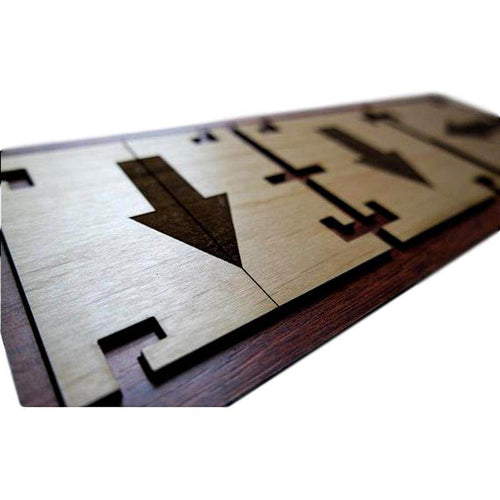For this edition of our "How To" series we are going to tackle Morse Code and show an example of how to use it in your Escape Room. Be sure to check out our other Secret Message ideas to enhance the experience of your escape room players. Don't miss our selection of puzzles, key mazes, ciphers, and more!
For a quick synopsis of just what morse code is check out this snippet from the morse code Wiki (or just skip on down a few paragraphs if you are only interested in learning how to read a morse code message):
While morse code is traditional used and thought of as an auditory method of communication for our purposes it is more of a visual medium. It can be transcribed as a series of Dots and Dashes allowing it to be read. While not ideal for longer messages it allows for a fun and creative way of relaying a short message or code to your Escape Room participants. Given the historical connotations it has the potential to fit in very nicely with a wide variety of Escape Room themes as well. For an example check out our Morse Code Panel
Alright, with that out of the way let's get down to translating a message. Below you will find a table denoting each character and it's given series of dits (dots) and dahs (dashes). When incorporating Morse Code into your Escape Room it is vital you include a key somewhere for participants to find. You can not expect them to automatically know how to translate the secret message or code.
This is where things get fun for those creating an Escape Room. Do you lock the key in a puzzle box? Do you have it sitting in a drawer as a seemingly unimportant piece of paper? Perhaps different pieces are scattered throughout the room. Better yet, create a mixed media experience and use audio clues to assist in reading the morse code. A tape could be looped to play the letters included in the message:
For Example let's use a simple word such as "HEY." The DITs can be represented by a short beep or pulse with the DAHs being represented by a longer beep or pulse.
DIT DIT DIT DIT, DIT, DAH DIT DAH DAH
Just image a classic cassette tape player sitting on a desk. The escape room participant hit play and is greeted with a series of letters followed by tones...
*Note - When writing down Morse Code it can be a good idea to include a space between each letter with two spaces between each word. This makes it much easier to distinguish the letters and decipher the message

Now, See if you can read the message below? (I did not include spaces between letters on this in order to accentuate why you should consider doing so)
What are your thought? Do you think Morse Code in a visual form has a place in Escape Rooms? Have you seen any examples of this or have any ideas on how to incorporate Morse Code in the Escape Room Experience?



1 comment
nice